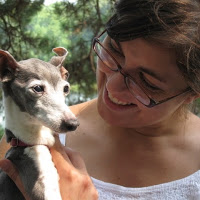by Mary Kate Hurley
Before you do anything else, make sure you read the fantastic news about the progress on Postmedieval from Eileen. Then you can read this, if you want.
There may be readers who are wondering just where I've been for the past few months. The long answer will follow, in a kind of summary reflection on teaching the Introduction to the Major course that I was assigned this semester. The short answer:  Yes, you read that title right. It's an Excel Spreadsheet. Of pronoun usage in Beowulf. Every plural pronoun, and believe me, there are a bunch of them. I have been, in short, very much an Anglo-Saxonist this semester. More on that soon, too.
Yes, you read that title right. It's an Excel Spreadsheet. Of pronoun usage in Beowulf. Every plural pronoun, and believe me, there are a bunch of them. I have been, in short, very much an Anglo-Saxonist this semester. More on that soon, too.
What I want to write about today is the hard-working Anglo-Saxonists who gave us the Concordance to the Anglo-Saxon Poetic Records and A Concordance to Beowulf. These amazing -- and hefty -- volumes do for the ASPR and Beowulf what the online Dictionary of the Old English Corpus search function does -- albeit for fewer texts and set words. Essentially, these concordances provide every occurrence of a word in the corpus of Old English poetry or Beowulf, respectively. In short, they are a quick and relatively easy way to see the relative frequencies and usages of specific words in Old English. Although there are other concordances which I may speak of at a later time, I want to focus, just for a moment, on these two texts.
Both texts were compiled by Jess Bessinger, with the programming assistance of Philip H. Smith. What's so fascinating about Concordances is both their limitations and the advantages they give to the careful reader. Highlighted in their pages are the difficulties of Old English language -- the words that are written similarly but have different meanings, or a different word-history, for example. But also highlighted in the nearly 2000 pages of these two concordances is the kind of meticulous work that graduate students like me could not get by without. These aren't the only two concordances to Old English -- they just happen to be the two I'm using at present. Which even in my work-oriented scholarly moments, I find quite awe-inspiring. I suppose that what I mean to say is that sometimes it's the work I could never have the patience for (editing a concordance, compiling statistical data about half-line usages in OE poetry, etc) that makes my work possible, and for that, I'm exceedingly grateful.
cross posted at ITM.
Sunday, May 31, 2009
A Short Ode to the Concordance
Posted by Mary Kate Hurley at 12:58 PM 0 comments
Subscribe to:
Comments (Atom)


